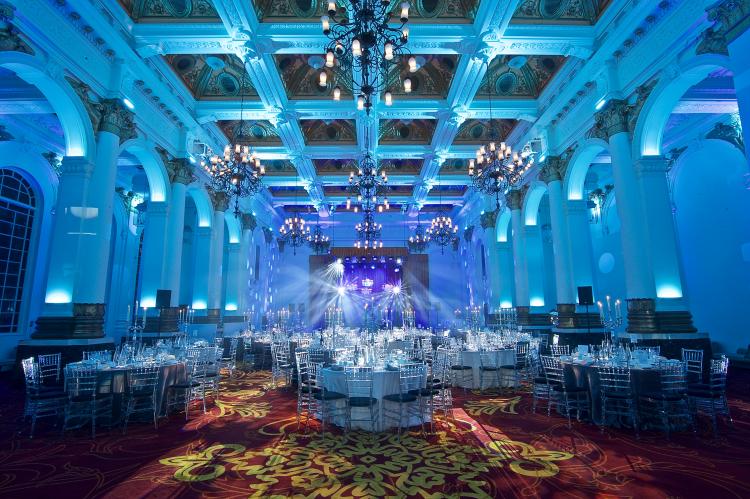There’s no such thing as a right or wrong colour. Like there’s no such thing as a wrong musical note. It’s how the notes are played. We can hear straight away when there’s a note that’s off. Same thing with colours – when colours don’t harmonise together they create a jarring effect.
Are you feeling blue today?
It’s a very distinct possibility because blue is Britain’s favourite colour.
A poll carried out earlier this month revealed that it is our go-to hue. And why not?
If it’s good enough for the Queen – who has been seen in various dresses in that particular shade for decades – then it’s good enough for the rest of us. Companies such as Twitter and Facebook also choose blue for brand recognition.
Blue may occasionally be associated with coldness, but it is also the colour of authority and logic, according to Karen Haller, who carried out the survey for post-it company 3M and is an expert on applied colour psychology, advising businesses on their branding.
If only the sky above us was our favourite colour from time to time. Its usual colour is what we choose to wear when we have something to hide.
‘If you came into work all in grey, you may not really want people to know who you are,’ said Ms Haller.
‘You get your job done, you go and then you show people who you are out of work. It’s a colour for when you don’t want to be seen.’
If you’re reading this in close proximity to anyone wearing a grey suit, perhaps you should keep your distance. The same goes for those wearing black, the colour of emotional safety, says Ms Haller.
‘Wearing black creates an emotional barrier – it’s a way of hiding the personality and protecting oneself.
‘When teenagers may want to wear black and they may want to have a black bedroom, they’re protecting themselves, they’re hibernating, they’re creating a cocoon, they’re trying to find who they are.’
She said our colour choices can speak volumes about us and are often performed instinctively.
The colours we wear and the colours around us impact our mood on an unconscious level.
The survey also revealed that many women were heavily influenced in their colour choices by their mothers and then went on to influence their own partner’s colour scheme.
Ms Haller said we regularly conform to fit in when it comes to colours, when we should follow our age-old colour instincts.
‘Before we had a spoken language, our very first primal language was colour. And it’s the way that nature still operates, nature works through a colour language.
‘That’s why red can mean warmth because of the warmth from a fire, but it can also mean danger. Every colour has a set of positive and negative qualities.’
Her favourite colour is a marigold orange.
‘It just makes me smile,’ she said. ‘It lifts my mood, it’s the colour of playfulness. It reminds me not to get too serious.’
Dr Derek Brown, associate professor in philosophy at Brandon University in Canada, is an expert on colour vision.
He said: ‘Colours are the engine of vision, which for many is the sense we use most actively to navigate our environment.
‘Take away all colour – including black and white – and the concept of visual experience crumbles.
‘When we see colours we typically see the world outside ourselves. However, many researchers believe that colours cannot be “out there”, but are instead at least partially in our heads. This is the fundamental tension in philosophy of colour.
‘Colours set moods, express ideas, grab our attention and we alter the colours of things to facilitate this. Just ask the fashion industry!’
Asking someone, ‘What is your favourite colour?’ may not be as personal a question as, ‘How much money do you make?’ or ‘Did you really vote for Ukip?’, but our answer is invariably very personal.
We might like red because it’s the colour of the football team we support, or purple might call to us because it’s the colour of the bandana worn by our favourite Teenage Mutant Ninja Turtle.
Sometimes we are more aware of our colour decisions.
‘I have a very good friend in Australia – she’s an artist,’ said Ms Haller. ‘To be creative, she actually has to work in white. She wears white, has white walls, everything has to be in white because she doesn’t want anything to distract her from her painting.
‘Other people need to be in certain colours or around certain colours. You go into a bar, you go into a store or you go into a hospital… it doesn’t matter what it is, what we’re always doing with colour is we are creating a mood and creating a feeling.’
The spaces we enter have been deliberately coloured to manipulate our mood, she added, making us behave how its designers intend.
But sometimes we rebel.
Ms Haller believes there has been something of a backlash from parents with newborn babies who are forced by marketers into buying blue products for boys or pink products for girls.
‘They feel their daughters are being driven to behave a certain way and down a certain path. It’s not the pink that’s wrong – it’s the way it’s being used. And it’s being used really to influence and to manipulate in a way.’
She said brands have to choose their colours carefully to put out the right message.
‘Our brain takes in colour before we take in anything else,’ she added.
‘There’s no such thing as a right or wrong colour. Like there’s no such thing as a wrong musical note. It’s how the notes are played. We can hear straight away when there’s a note that’s off.
Same thing with colours – when colours don’t harmonise together they create a jarring effect.’



